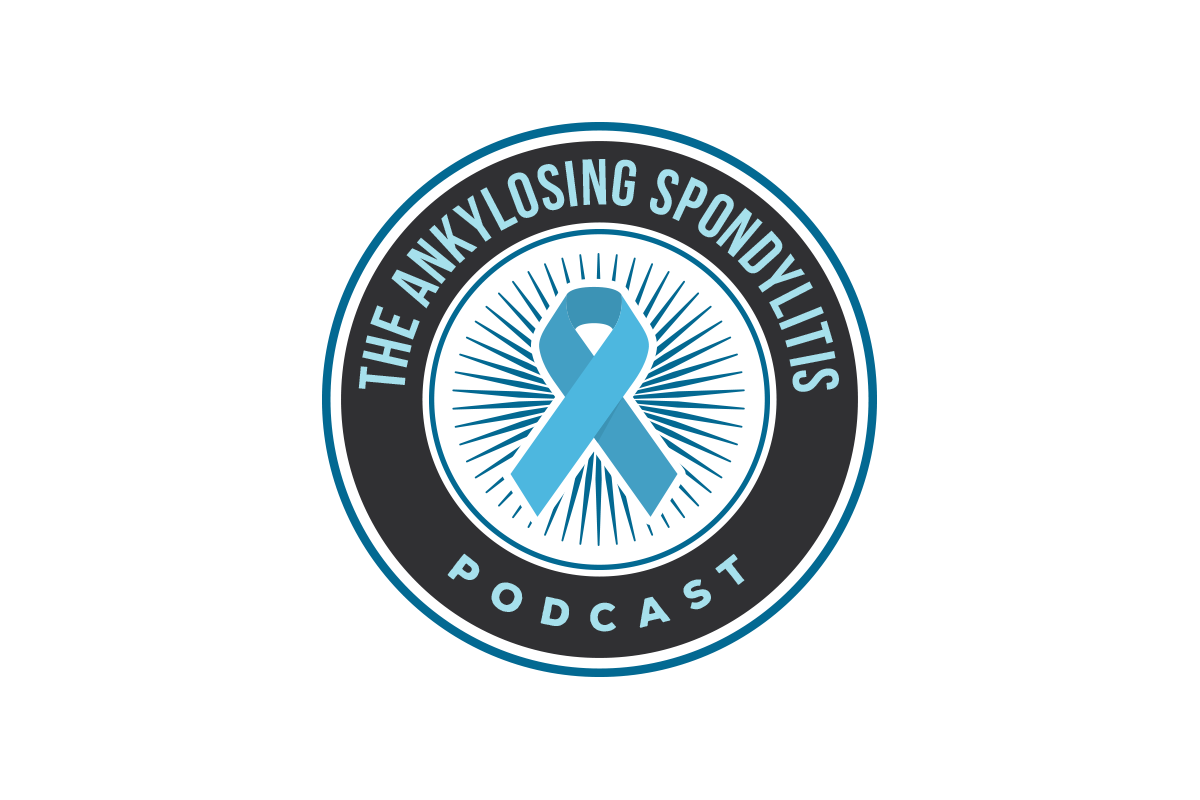Episode 56
Questions and Answers About Ankylosing Spondylitis
Hello and welcome to this episode of The Ankylosing Spondylitis Podcast. How is everyone doing? I hope everyone is having just a fantastic week. So if you're on my website spondypodcast.com, you'll notice a link on the main page called Buy Me A Coffee. And that's a link that I used for anybody that wants to provide, you know, a donation to help keep the show going. And I have a fantastic message that I got last night through that link. Lisa, who is from Ireland sent a donation, which is fantastic and much appreciated and on it she wrote,
I've had AS for 22 years, everything you describe is true. And I cry when I listen. I cry because I'm so sad for myself and because I'm not alone. Thank you from the bottom of my heart. Love Lisa, the cat lady from Dublin, Ireland.
Well Lisa, I'm glad you like the show. I'm glad you find some benefit to it. Also Lisa and many others have done on spondee podcast comm you can sign up for the newsletter that I occasionally when I feel like it when I get around to it create. So I'd encourage you to go there to spondypodcast.com sign up for the newsletter and join Lisa and all the others receiving information when I get around to sending it out. This last one I sent out had pictures of Bandit in it, my service dog and training so you never know what I'm going to include in there.
Now on to today's show, I see a lot of questions asked online every day about Ankylosing Spondylitis and these questions ranged from real basic, I've just been diagnosed, what do I expect? What should I expect? Should I take medication? Can I cure it? To very detailed questions specifically in relation to is this part of Ankylosing Spondylitis or not? So I put together these nine questions and some answers to them that hopefully this will help you as you start off your journey with Ankylosing Spondylitis.
Number one is Ankylosing Spondylitis an autoimmune disease? Ankylosing Spondylitis is both an autoimmune type of arthritis and a chronic inflammatory disease. An autoimmune disease develops when your body attacks its own healthy tissues. Ankylosing Spondylitis is also an inflammatory condition that involves inflamed or swollen joints. It often affects joints and bones in the spine, lower back spinal bones confused together over time, and this is what is known as bamboo spine and, and how the name developed.
Number two, what exactly is Ankylosing Spondylitis? Ankylosing Spondylitis is a type of inflammatory arthritis that affects the spine and the sacroiliac joints in the pelvis. Like many types of arthritis, Ankylosing Spondylitis can cause pain and swelling in the joints. This condition affects the bones of the spine, the vertebrae, and joints in the lower back. It also causes swelling were the tendons and ligaments attached to the bones in your spine. Your doctor might call this and Enthisitis pain and discomfort from Ankylosing Spondylitis can lead to symptoms in other joints such as shoulders, hips, you know, basically, if there's bones that come together, or there's muscles or ligaments AS can affect those areas.
Number three, how is Ankylosing Spondylitis diagnosed? The doctor will likely start by asking about your symptoms and family history of AS. An exam can reveal symptoms like pain, tenderness and stiffness of your spine. The doctor then might send you for an X ray or MRI, or maybe even both, though generally not on the same day. Both tests can show damage to bones and soft tissues in your spine. An MRI creates more detailed images, and it can show damage earlier in the disease than an X ray can. Another way to diagnose this condition is with a blood test for the HLA-B27 gene. Now, some people don't have this gene, but have Ankylosing Spondylitis and not everybody that's positive with the HLA-B27 gene will have Ankylosing Spondylitis. So it's just one of the things they look at. You know, the prevalence of the HLA-B27 varies in different ethnic populations. The genotype is seen in approximately 80% of the Caucasian patients with AS but less than 60% in the African American population. As I said, it is possible to have this gene and not have Ankylosing Spondylitis
Number four; do I need to see a specialist? Your primary doctor might first suspect Ankylosing Spondylitis or may actually diagnose you after this point. They may refer you to a rheumatologist. This type of Dr specializes in diseases of the joints, bones and muscles. The rheumatologist might be your go to doctor for treatment. You might also need to be seen by physical therapist or an ophthalmologist if you have eye symptoms, and don't forget, you may also need to be eventually be seen by a orthopedic surgeon as well. So, it's good if you're diagnosed with Ankylosing Spondylitis, to make sure you have an ophthalmologist that you're comfortable with. And then your general practitioner, as well as the rheumatologist should form the nucleus of your team for dealing with Ankylosing Spondylitis.
Number five, how will my doctor treat Ankylosing Spondylitis? Ankylosing Spondylitis treatment involves medications anciliary care from physical therapy or occupational therapy and lifestyle changes. Surgery is also a possibility if your joints are very damaged. That was my case, I had both my hips replaced by age 23 and It has led to most of my AS problems have been tied in one form or fashion to the damage that was done to my hips from first Ankylosing Spondylitis and then the issues with the hip replacement of the left hip. Those have created the bulk of my problems. Your rheumatologist may recommend one or more of the following Ankylosing Spondylitis treatments. Non-steroidal anti-inflammatory drugs, such as ibuprofen to decrease pain and inflammation. A biologic, such as a TNF inhibitor, which are given by an injection or an IV infusion, physical therapy to teach you exercises that strengthen and stretch the affected joints in your back, and then possibly Disease Modifying AntiRheumatic drugs to treat pain and inflammation in the joints. Diet hasn't been well studied for Ankylosing Spondylitis, but it is found that people react different to changes in food, some people may need to remove things like night shades, others might need to remove dairy, grains and some people remove all of that. And last, avoid smoking, which drives inflammation. It can worsen joint damage from Ankylosing Spondylitis.
Number six; what surgeries are there for Ankylosing Spondylitis? Surgery is a last resort option for people with severe joint damage. A joint replacement removes a damaged joint and replaces it with one made from metal, plastic or ceramics. Spinal surgery is indicated when patients are severely impaired and unable to perform daily activities. There are several procedures that are used on the symptoms and imaging findings and osteotomy involves a procedure to straighten your spine and correct your posture. A laminectomy can be performed if there is pressure on nerve roots
Number seven will I need physical therapy? Physical Therapy is a recommended treatment for Ankylosing Spondylitis. It teaches you exercises to increase movement and flexibility and decrease pain. Physical Therapist can also show you posture exercises to improve your flexibility and range of motion. I recently fell on my right hip and jarred my back. And so I'm going to be going to physical therapy. It's been years since I've gone to physical therapy, but my orthopedic surgeon thought it might be a good idea to attend some sessions.
Number eight, what complications might arise? Ankylosing Spondylitis can cause complications like fusion of the spinal bones and a forward curvature of the spine, which is what I have weakening of the bones, which is osteoporosis, and fractures. Eye inflammation called uveitis. And probably the aorta, the largest artery in your body's secondary to inflammation.
Nine, what to do if my symptoms get worse? Well, your symptoms that get worse can mean that your treatment isn't working as well as it should and that your Ankylosing Spondylitis is progressing. For example, your spine might feel stiffer or more painful than usual. Or you might begin to experience symptoms and other joints. Excess tenderness is another sign of increased inflammation. If you're experiencing any new or worsening symptoms, you know, you want to call your doctor right away. Don't put it off. Don't think, oh, it'll get better. It's better to be seen and looked at the knot and let this continue to progress in you. They might recommend a change to your treatment plan to relieve your discomfort and prevent your condition from getting worse. And lastly, is there a cure? Well, there's no cure for ankylosing spondylitis, and anyone that pedals one is, is peddling snake oil. There aren't cures for most other forms of arthritis either. But you can put as in remission that can be done from eating. You know, diet changes can be done from medications, exercise, all of those can help your body to put the disease into a remission, which can slow you know the rate of joint damage, which is what we all want. So if that's the basis so if you're able to achieve that that's fantastic but know that it's always underlying out there and waiting to rear its its head up to come back.
So I hope everybody has again, a wonderful, wonderful week, please go to spondee podcast comm to sign up for the newsletter and don't hesitate to reach out to me with any questions. Thanks and have a great week.
This episode was based upon this article - https://www.healthline.com/health/ankylosing-spondylitis/questions-about-ankylosing-spondylitis
Joy Organics premium CBD products


